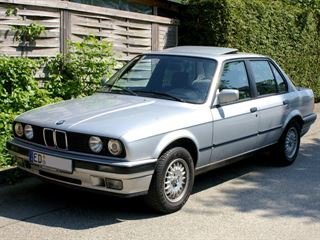Cars like these don’t come along every model year. When they do, however, competing automakers often find themselves scrambling to come up with their own version of whatever that trendsetting new car may be. So we've taken a quick look back at just a few of the biggest automotive trendsetters of the past 30 years or so. None of them are supercars, or even sports cars for that matter, but each one managed to forever change the automotive industry, for better or worse.
The Honda Civic first arrived on American shores in 1978 and it finally proved that an economy car didn't always have to be a complete piece of junk. Compared to the Ford Pinto and Chevy Vega, the Civic had overall excellent build quality and was quite fuel efficient. Despite some early rust issues, the Civic continued to catch on with buyers and today it’s one of the best-selling cars in the US. A total of nine generations have been built so far and, despite even more potent competitors today, the Civic doesn’t seem to be going anywhere anytime soon.


Before the arrival of the minivan, there was the station wagon. But for those who wanted something a bit more trendy and off-road capable, there was also the original Jeep Cherokee - perhaps the first modern SUV. When it first arrived on the scene in 1984, it allowed buyers to enjoy a reasonably-priced family car that could also handle itself when the road conditions turned rough. More importantly, it looked good and had solid engine options. Although it was quite outdated by the time production ended in 2001, it still remained popular among enthusiasts.


Yes, we already know how much of a game changer the BMW 3 Series has been ever since it hit the market way back in 1975. But it was only in 1983 when the second-generation E30 model arrived that BMW begun to offer it as a sedan alongside the coupe. And so began the era of the sports sedan. Before the E30, family sedans were usually big cars that may have had decent enough power but weren’t all that much fun to drive. The second-gen 3-Series sedan changed that thanks to its range of powerful inline four- and six-cylinder engines and well-tuned suspension.


Many may have derided it as an expensive Toyota with leather seats, but those naysayers have been proven wrong when it came to the Lexus LS 400. It debuted as Lexus’ first model back in 1989 and it immediately put German brands like Mercedes-Benz and BMW on notice. The reason? Toyota had successfully managed to build and engineer a premium luxury car with proven Japanese build quality and refinement. The first-gen LS 400 even had a new 4.0-liter V8 and a unique platform that wasn’t shared with anything else. It was an instant success and quickly became the new luxury benchmark.


We know what you’re thinking but bear with us for a moment here. The Toyota Prius never was and never will be an exciting car or anything even remotely associated with the words "fun" or "performance." What it did do, however, was usher in the era of the hybrid car. When it launched in the US in 1997, environmentally-friendly cars mainly consisted of failed projects like GM’s EV1. The Prius changed that by proving that a mass-market gasoline-electric car could combine everyday usability without range anxiety and still save money at the pumps. We still can’t stand it though.


Related News



